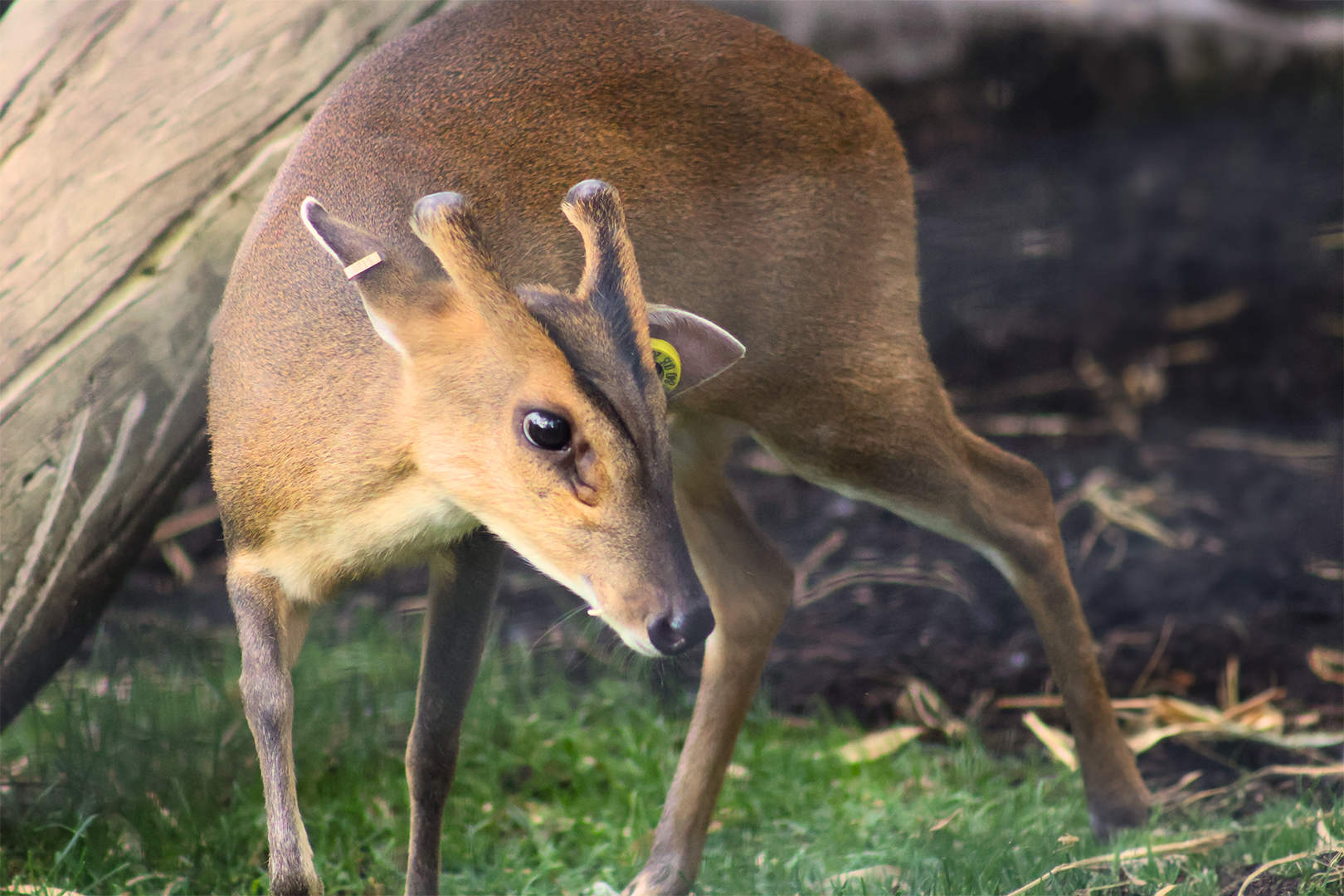I LIVE IN ASIA
The muntjac is native to various regions of Asia including India, Myanmar, and China. This species was also introduced to areas of England and France in the 20th century and can still be found there today, despite not being native to those areas.
I AM AN OMNIVORE
This species feasts largely on bamboo, seeds, bark, and fruits. They also have been known to eat eggs and carrion when the opportunity presents itself.
MUNTJACS ARE SOLITARY
The muntjac is a solitary species, but can also be found living in family groups.
OH MY, WHAT BIG TEETH YOU HAVE
Male muntjacs can be identified by the very large set of downward pointing canine teeth they have.
HELPING MUNTJACS IN THE WILD
By visiting the Fort Wayne Children’s Zoo, you are supporting local, regional, and global conservation. A portion of every ticket sold goes towards conservation of wildlife and wild places. Each year, the Fort Wayne Children’s Zoo donates over $250,000 to our conservation partners.
I AM IMPORTANT TO MY ECOSYSTEM
The muntjac, also called the “barking deer,” is known to make a barking sound when threatened. These alarmed barks are used as warning signs for other small mammals that signal when a predator is near.

